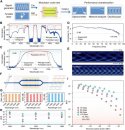YesI don't think we need to know the exact number of ASML NXT2xxxx machines they will receive, but based on the much greater % of China market revenue for ASML in Q3 & probably part of Q2/Q4, they clearly delivered a lot of expensive ones. Enough for whatever expansion plans SMIC has for the next few years.
Larger feature size of 40nm node comes with larger error tolerance, so it’ll definitely make things easier for SMEE.So we may have question of what to do about SMIC's mature process like 28/40nm, since they badly need to expand there too.
Based on what I heard before and please correct me if I'm wrong here, but it's probably easier for a new SMEE Arfi scanner to do trial production & achieve satisfactory yield on 40nm process vs 28nm. I assume they've also stocked up 1970 & 1965 at Jingcheng & Shenzhen fabs during this time.
I don’t think ASML sale NXT1965 or 1970 for awhile now (based on their scanner roadmap). NXT1980 is now their “mid critical” ArFi scanner, basically the lowest ArFi model. Jingcheng and Shenzhen should basically mainly NXT1980 fabs.
AgreeSo, I just don't see it makes sense to speculate what Dutch govt might do in 1 or 2 years. More important is what ASML actually can ship to China right now and to which fabs. And whether or not it can replace American parts.
As discussed with the Japan sanctions, they don't have anything in their law like what you see with what BIS controls. They've already granted licenses. Assuming that they will have same type of sanctions as US govt is just not reaonable
None of this is to say validation of domestic equipment should slow down, but it is okay to continue to use foreign equipments. And we should expect that they do that

